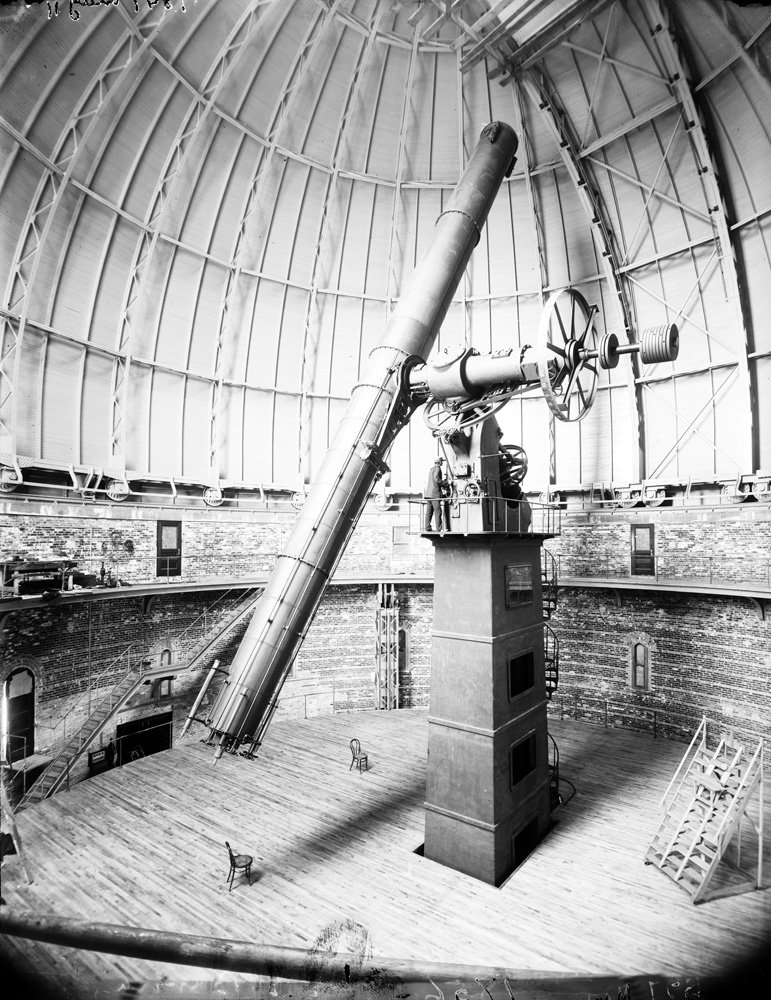Astronomy
Astronomers study the night sky to identify, describe, and classify objects in space. In the nineteenth and early twentieth centuries, astronomers around the world undertook large-scale mapping projects to create more accurate and complete maps of the positions of stars and nebulae. Important as navigational aids in a world without GPS, these atlases and catalogs were also vital repositories of scientific knowledge. They presented fundamental knowledge to the scholarly community and served as essential reference works for further research. Astronomers also conducted detailed analyses of specific objects, such as determining the orbits of comets in the solar system and identifying the atoms present in spectra of stars, to learn more about the nature of celestial objects. Thanks to increasingly powerful technological equipment and the more precise measurements, it was possible to determine the distances of stars by measuring their trigonometric parallax. At Yerkes Observatory, women contributed to all areas of astronomical research.

